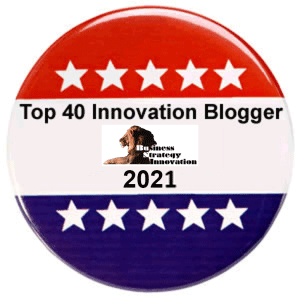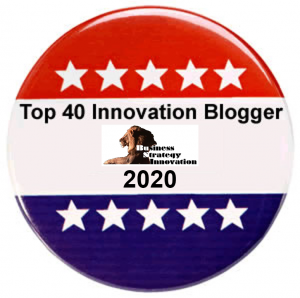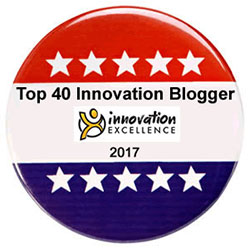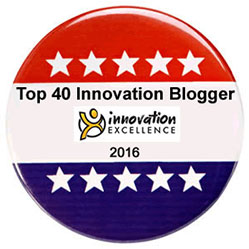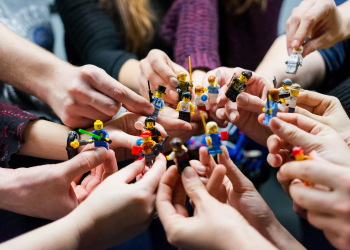One of the most challenging and thrilling aspects of reinvention, transformation and business game shifting is the opportunity it creates for continuous deep learning and change led organisational innovation. This in itself, often creates problems for some people, because it challenges their perceptions as to what these terms mean, what they involve, how they link to strategy, and how they get implemented. Whilst most of us know that organisational innovation involves making serious and significant changes, what many of us are challenged by is how to change impacts, effects and disrupt the people who work there and are expected to engage in, drive and deliver the desired changes.
How organisational impacts people
How it involves their four-core human structures: cognition, emotion, body, and will, which is one of the biggest, impactful innovation problems that organisations need to learn how to solve.
There is a distinct opportunity for organizations to better accept, acknowledge, and learn how to adapt, flow and intentionally shift within these four structures. Doing this enables them to affect the deep, powerful and positive changes that organisational innovation requires: because they will deliver successful change or reinventions, develop high-performance organisations that achieve business and digital transformations that result in increased competitiveness, growth and value.
Working on the people side of organisational innovation
Our global innovation eco-system team met online recently to explore how these four structures impact and play out on the people side of innovation. We discussed and agreed that most people are naturally wired to resist, rather than embrace change. We explored how the clues to accepting, flowing and shifting people’s auto-pilot and reactive responses to change, lies in these four-core human structures: because change catalyzes and ignites people’s differing range and depths of fears, usually resulting in a painful physiological stressed state.
People feel uncomfortable, out of control, insecure or unsafe, or a mixture of these painful stress states.
This suggests that, when people are expected to change by “failing fast to learn quickly,” all these painful stress factors, combine unconsciously with their old memories, perfectionism, and emotional anchors around making mistakes and failure, punishment and retribution, and implicitly come out to play in the form of resistance.
This is what prevents them from seeing, adapting to, and realizing the possibilities and benefits that change brings.
We discussed how these factors impact significantly on how some organisations currently approach innovation and how resistance gets catalyzed, ignited and comes out to play. Along with any inherent complacency, which results in the “innovation permafrost” settling in. This manifests and festers with their already “fractured attention” in denying that real changes are needed. It embeds risk adversity and justifies sustaining the status quo. They may even appoint an innovation manager and seek short term training solutions to tick off their innovation “to do” list, and of course, this does not solve people’s innovation problems.
The organisational innovation disconnect
We explored how these factors cause not only resistance to change, but also how they inhibit and prevent organisations from adapting, competing, growing and innovating. Through connecting, exploring, discovering, designing and delivering innovative solutions that add value to the quality of people’s lives.
This “disconnect” is most apparent between the approaches some organisations are taking towards embracing change led innovation.
Between what we describe as a “true” fluid strategic, systemic and learning anchored approach, which truly enables and supports people to “fail fast to learn quickly.” With short term, episodic “methodical” training and functional-based approaches to innovation, where people lack psychological safety and don’t have the permission to “fail fast to learn quickly”.
- Fluid Strategic and Systemic Innovation
We described “true” fluid innovation as passionately purpose-driven, strategic, leader-led, systemic & human-centered approach involving;
- Being empathic and compassionate as to where people are at, being accepting and acknowledging their fears and resistance. Allowing them and giving them permission to be vulnerable and express their concerns, and listen carefully and acknowledge these as being true for them. (cognition, emotion, body, and will)
- Igniting People’s intrinsic motivation to pull them towards the possibility of a more compelling and desirable future (when the change has been implemented). That is meaningful and purposeful to them (aligned to their needs & values) and worth the discomfort of pursuing. (cognition, emotion, body, and will)
- Enhancing their emotional capacity including resilience and determination. (cognition, emotion, body, and will)
- Effecting deep mindset & behavior changes that enable them to take smart risks, improvise, experiment and learn from failing. (cognition, emotion, body, and will)
- Coaching People through the connection, exploration, discovery, design and delivery phases of innovation to enable them to learn by doing; inventing, iterating, getting user feedback (positive and negative) and pivoting creative ideas with a minimal viable product, process or service. (cognition, emotion, body, and will)
- Developing people’s capabilities through developing their generative discovery skillset to enhance and embed curiosity, collaboration, and creativity into the workplace. (cognition, emotion, body, and will)
Ultimately resulting in initiating a culture of innovation where people deliver system and process improvements, as well as disruptive and radical products and services that customers value and cherish. Finally, securing organisational growth, competitiveness and delivering an authentic business or digital transformation.
- Episodic Methodical Innovation
We described episodic “methodical” innovation as “stand-alone” functional or training programs based on incorporating specific subjects, which may include innovation management, design thinking, agile and SCRUM programs. These train People in the crucial “how-to” skills that are required to effect system and process improvements, which are also important to overall innovation success. Ultimately resulting in people delivering mostly incremental and differentiated products and services that customers value and cherish, and deliver improved efficiencies and productivity within the sphere of continuous improvement.
The organisational innovation problem and solution
We agreed that taking an “either/or” approach, in other words, just taking “either” a fluid, “or” just a methodical approach is a serious waste of an organisations time, investment and efforts.
We agreed that organisations that courageously commit to embracing a “both/and” approach will improve its adaptiveness and agility. It will also embed deep and continuous learning that enables and empowers people to innovate by “failing fast to learn quickly”.
By integrating the “fluid strategic and systemic approach” with the “episodic methodical “approach, organisations can flow and flourish in delivering the outcomes and achieving the business performance they want.
It all depends on the change or breakthrough an organisation wants
A recent article “Digital-Era Change Runs on People Power” from the Boston Consulting Group (BCG) states that; “putting People first can lead to innovative thinking and dynamic results”.
This suggests that organisations have a fundamental choice to make – they can take the safe and less disruptive surface-based change approach and improve efficiencies and productivity and possibly embed a culture of continuous improvement.
Alternately, they can invest their valuable resources, time and efforts in a “both/and” integrated, courageous, risky and continuous learning journey along the “road less travelled.” By intentionally disrupting people’s complacency, comfort zones and resistance by;
- Safely taking them outside of their comfort zones and working with, and across their four-core human structures.
- Adopting a fluid, culturally anchored, strategic and systemic approach that will develop people’s capacity to be adaptive.
- Designing and delivering a deep blended learning journey that builds people’s capability to innovate by enabling and empowering them to safely be, think and do things differently.
As many of know, journeying along “the road less travelled” is never the easier or quicker path, to take. In this case, it requires investing in building people’s and organisational capabilities through emphasizing and embedding a culture of robust continuous learning. That maximizes people’s collective genius, in the age of imagination, by integrating their four-core structures; cognition, emotion, body, and will.
This ensures that innovation becomes a collective, creatively energetic and collaborative leadership challenge that results in solving people’s innovation problems by making organisational innovation part of everyone’s job, every day.
At ImagineNation™ we provide innovation coaching, education and culture consulting to help businesses achieve their innovation goals. Because we have done most of the learning and actioning of new hybrid mindsets, behaviors and skill-sets already, we can help your businesses also do this by opening people up to their innovation potential.
Contact us now at janet@imaginenation.com.au to find out how we can partner with you to learn, adapt and grow your business in the digital age.

